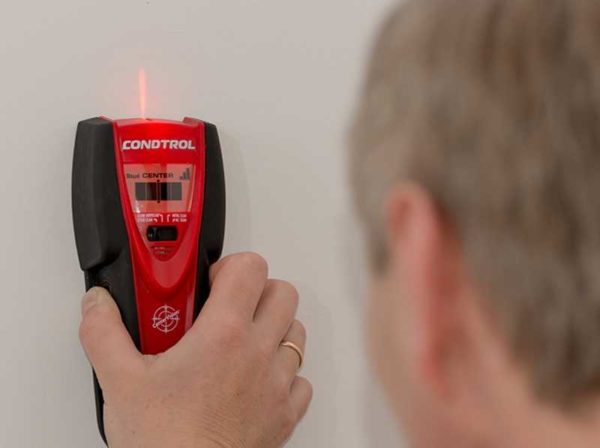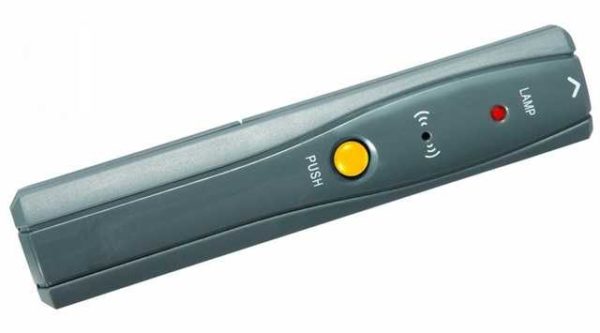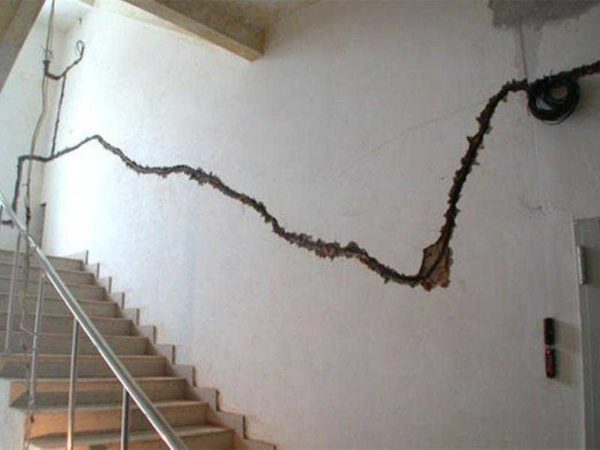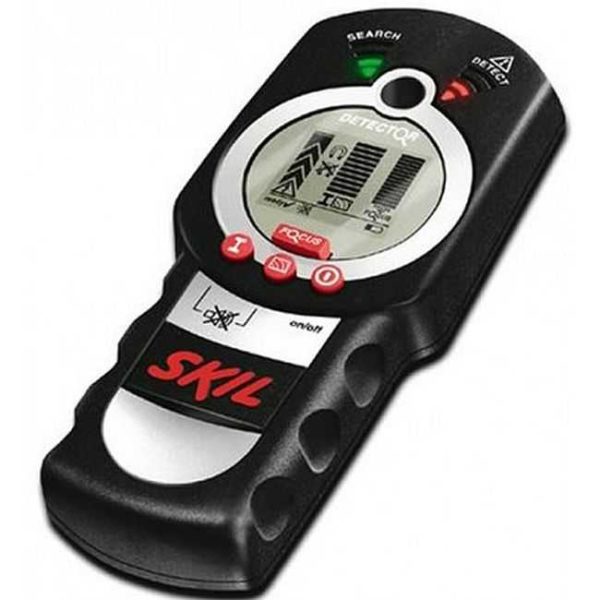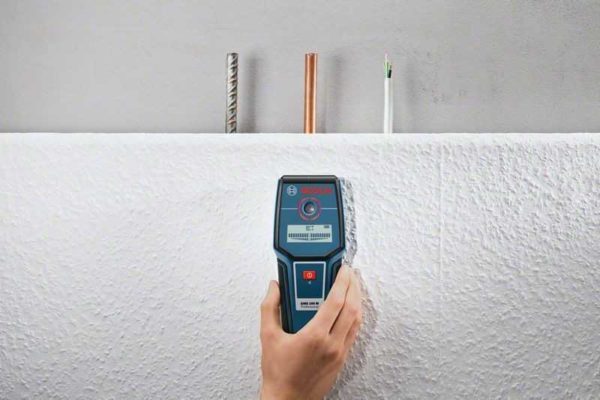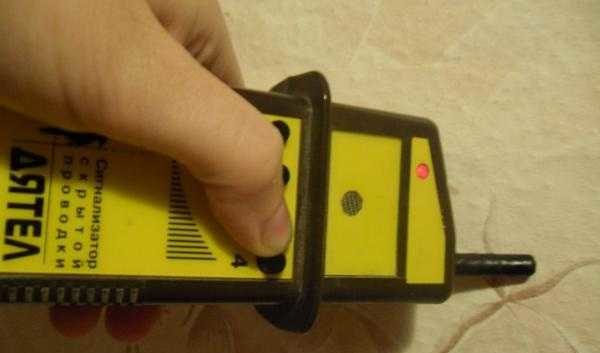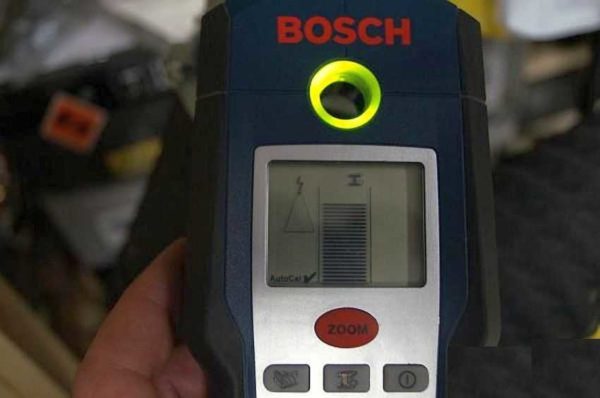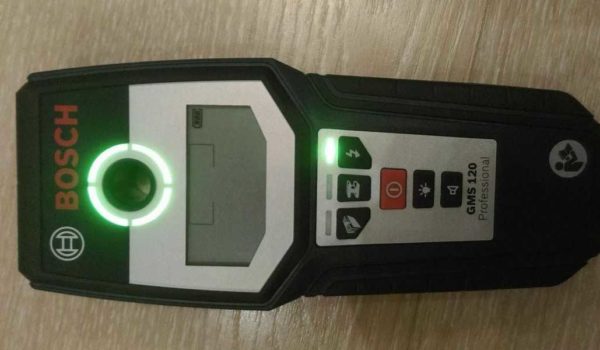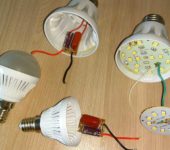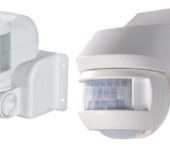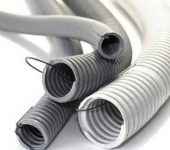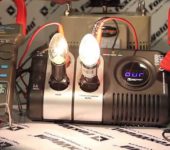Detector (indicator) of hidden wiring
During repairs, redevelopment, or even if necessary, drill a hole in the wall, it is advisable to make sure that there are no wiring, fittings or pipes in this place. All this can be done by a device for detecting hidden wiring. This is a small and relatively inexpensive device that weighs at most 200 grams, but it can help quite tangibly: getting into a pipe with water or wiring during repairs is, to put it mildly, unpleasant.
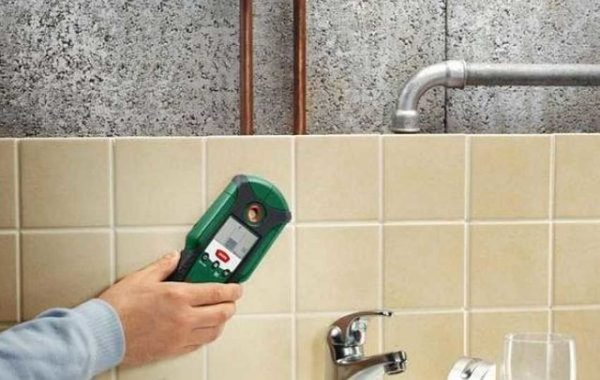
Finding hidden pipes or wires behind plaster or tiles is a task that a hidden leash device can perform.
The content of the article
Types of devices for detecting hidden wiring
There are several types of devices for detecting hidden wiring. They work on the basis of different phenomena and serve different purposes.
Let's start talking about the types of devices with how this equipment is called. The official name is a device for detecting hidden wiring. They can be called: a detector, an indicator, a signaling device, a finder, a determinant, a tester. In general, there are a lot of names, but the essence is the same. These devices (some of them) can find wiring hidden in the wall, frame (metal or wood), metal or plastic pipes.
Detecting metals in the wall
There are detectors for wiring, fittings, metal frames, which are miniature metal detectors. They create a magnetic field around them, to which metals hidden in the wall react. Detects any metal, be it a screw, water pipe or wiring.
These devices are usually inexpensive, many can fairly accurately indicate the location in the wall, and some under the floor (with sufficient detection range). Disadvantage - with an abundance of metals, it is difficult to determine where what is. For example, in a reinforced concrete wall, determine where the reinforcement is and where the wiring is. To be precise, having a device for detecting this type of wiring is simply not possible.
Some models of metal detectors can detect not only metal, but also wood or plastic hidden in the wall. They work on a different principle - they determine the density of materials by the speed of passage of pulses. These are already quite complex devices, more expensive, most often they have a liquid crystal display, which displays information about what exactly was found in the wall.
Wiring detectors
There is another type of equipment for finding wiring - detectors (also called testers or indicators). These devices react to an electromagnetic field, which creates a current flowing through the conductor. That is, this type of device is good at detecting the presence of wiring under load or voltage. If a conductor is broken or a pipe or metal frame needs to be found, the conductor detectors will be useless.
These devices have one more drawback - they are useless on damp walls, since they give signals almost constantly. Wet walls "respond" to the device's electromagnetic field, causing it to ring constantly.
Universal devices
Since both types of equipment are often required in operation, a versatile wiring locator has been created. Such equipment usually has several operating modes - for detecting metals in general and separately for searching for wiring.These modes come with varying degrees of sensitivity - to determine the exact location of the found communications with the wall.
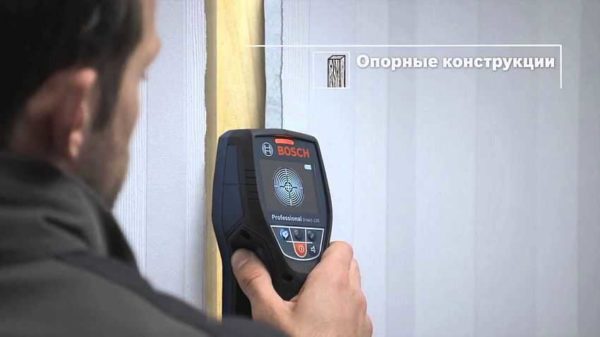
Universal devices can find not only metals, but also wood and plastic, however, plastic must be filled with water
Typically, such a device for detecting hidden wiring belongs to the class of professional equipment or pro-professional. They usually work more accurately, but they are much more expensive. It is also worth noting that some models (in particular BOSCH DMF 10 Zoom) require presetting. Before using it for its intended purpose, you must turn it on and hold it pressed against the wall for a while. Moreover, there should be no voids, metal or other irregularities in the wall. After this setting, the device identifies everything very well, but if you work with it immediately after turning it on, it shows nonsense.
Features and disadvantages
There are several points common to all devices for finding hidden wiring. Only they are manifested to a different extent - cheaper models have more, expensive ones less. So here are the problems:
- Each scanner has a maximum metal detection depth (and not only). The closer to this depth the sought objects are, the greater the likelihood of an error: two objects located a few centimeters from each other can be identified as one or not at all.
- It is best to identify objects that are well above the maximum scan depth, located at a certain step. For example, floor joists, reinforcement in a slab or foundation, etc.
- If two objects are located nearby (at a distance of a couple of centimeters), one of which is much larger, then the smaller one may not be "caught" at all, and the location of the larger one will be displayed with an error - the device "averages" the position.
As already mentioned, these phenomena are less, the higher the class of the device. So when working, always remember that there can be mistakes and work carefully and certainly with the power off.
What to look for when buying
First, you need to decide on the set of functions that you need. If you only need to find the wiring, an inexpensive detector can do just that. If you also have to define frames or pipelines, you will need a more serious device.
Scan depth
When buying, pay attention to what materials this model can determine, to what depth these materials can be. Cheap models are usually looked for at a depth of 20 mm, which is clearly not enough - the layer of plaster is usually more - about 30-40 mm. In general, it is advisable to "see" the hidden wiring detector as deep as possible. True, such models are more expensive.
Indication type
It will be necessary to decide on the type of notification. It is of three types:
- Signals are generated by sound of different tonality and / or duration. By the type of signals, you can distinguish what exactly the device found in this place.
- Light indication. There are LEDs that light up when wiring or communications are detected. They can glow in different colors, with different intensities. Knowing how the device reacts to what materials or the degree of approximation, having adapted, you can quite accurately identify "finds".
- Liquid crystal screen. The most expensive type of appliances, but also the most convenient. The information is displayed in an understandable form, no problems with decoding. The presence of the screen does not interfere with the use of sound signaling - this combination is the most convenient.
In general, you have to get used to any detector - to study what signals it gives when approaching each type of "finds".To do this, you must first check the reaction on open wires, fittings, wood, then try to find what is hidden in the wall or in the floor. In addition, before starting work, it is advisable to do the incredible - read the operating instructions. This usually helps you learn how to operate the device faster.
Store test
Test your chosen model before purchasing. Any wire leading to an electrical appliance can be used as an object. See if the declared scanning depth matches the real one - try to “find” the wire at different distances from it, cover it with a board, a piece of plastic, etc., try again. If all tests are passed normally, you can buy.
Best options
In this section, we tried to collect the most successful models of detectors of hidden wiring according to reviews. As usual, sometimes there are opposite reviews for the same model. We tried to select those for which the number of positive reviews significantly exceeds the negative ones.
Woodpecker Wiring Detector
This device is produced in Ukraine, it costs a little $ 25-30. Received three times more positive ratings than negative ones. Can be used to locate live conductors. When working, do not turn off the light, but it is advisable to load the network with something (for example, turn on the lamp). He successfully detects live wires, but if the conductor is laid in a plastic pipe, he does not see it.
The Woodpecker has four sensitivity modes:
- determines the location of the conductor with an accuracy of 10 mm;
- up to 100 mm;
- up to 300 mm;
- up to 700 mm.
That is, you need to start work by turning on the 4th mode. When approaching the conductor, the LED starts blinking, a squeak is heard. The closer to the conductor, the faster the blinking, the louder the sound. Having found out the boundary of the most intense signals, we put a mark on the wall. We repeat the operation on the other side. Next, switch the mode and start the search from the already marked boundaries. So, gradually, we find the location of the conductor with an accuracy of 1 cm in both directions.
Bosch DMF 10 Zoom
This instrument has an LCD monitor and two modes of operation: metal detection (magnetic and non-magnetic), wood and wiring. There is a Zoom mode to increase the sensitivity of the device. But its inclusion leads to the fact that the detector begins to respond not only to wiring, for example, but also to nearby metal posts or reinforcement bars.
When approaching the desired object, sound and light indication are turned on. A scale glows on the screen of the device, according to which you can determine how close the device is to the conductor - the closer, the more colored stripes on the scale.
Also, the display shows graphic images of the found materials:
- A crossed out magnet means a non-magnetic metal (aluminum, for example);
- graded lightning - live wiring;
In order to be able to find objects normally, it is necessary to study the operating instructions. It describes many nuances that will allow you to correctly interpret various situations and not make mistakes when working.
Determine hidden wiring Bosch GMS-120
Another detector of a famous company. In addition to wiring and metals, he is looking for wood. There are three modes of operation:
- metals, magnetic and non-magnetic;
- wiring;
- wood.
Has good reviews, it differs from the previous version in the absence of the Zoom function. But in the middle of the case there is a hole through which you can mark the place where the conductor passes on the wall, or vice versa, a place free of all kinds of metal - for safe drilling in the wall, ceiling or floor.
From all the reviews, several practical recommendations can be derived:
- if the device "rings" along the entire wall, touch the wall with your other hand (remove the pickups), it will work normally;
- if you do not understand the indications, read the instructions, everything is described clearly there - in which cases to use which modes.
In general, with some experience, you can quite accurately determine where the wiring is.
POSP 1 device
The product of domestic production is good because it allows not only detecting live wiring. He can even find a broken wire in the wall. For this, the switched on device must be led along the conductor. While the wire is intact, the light indication is on. In the place where the indicator goes out and there is a break. To be sure, carry out a similar operation on the other side (you can repeat the test twice).
This device costs a little - $ 20-25, but its popularity is not very high, there were no reviews.

